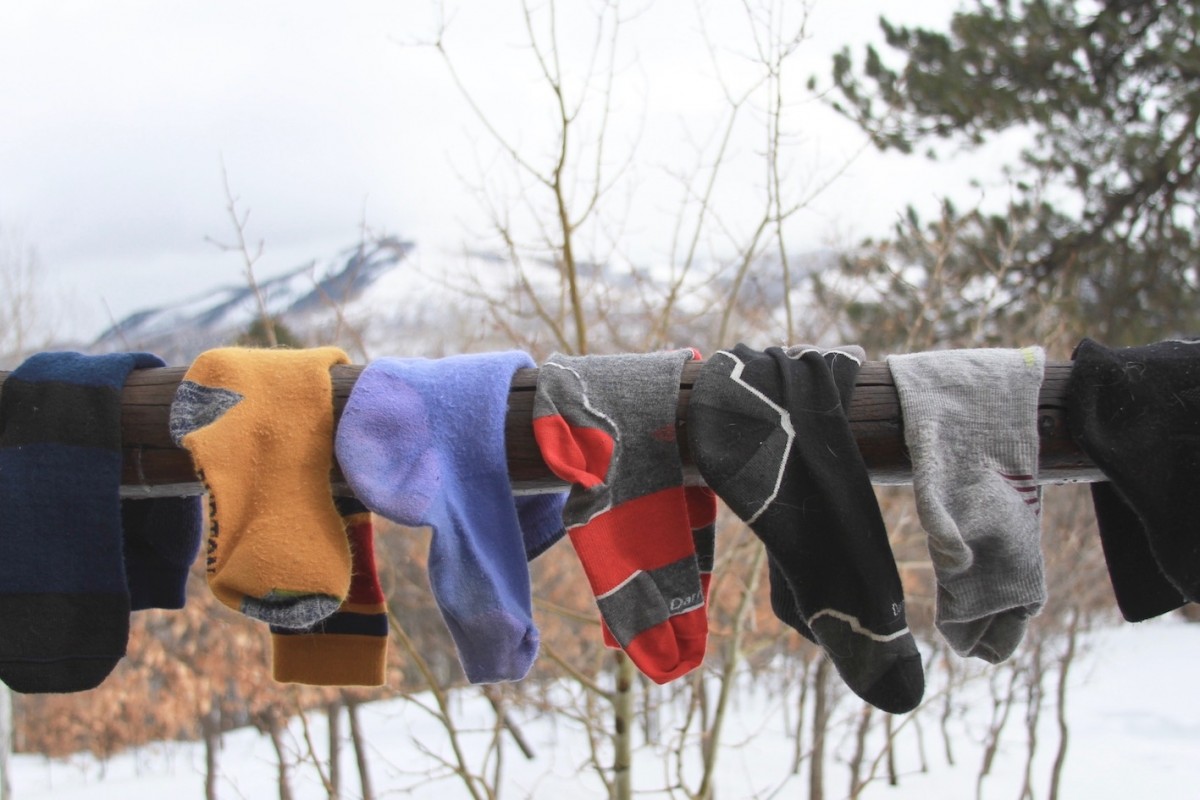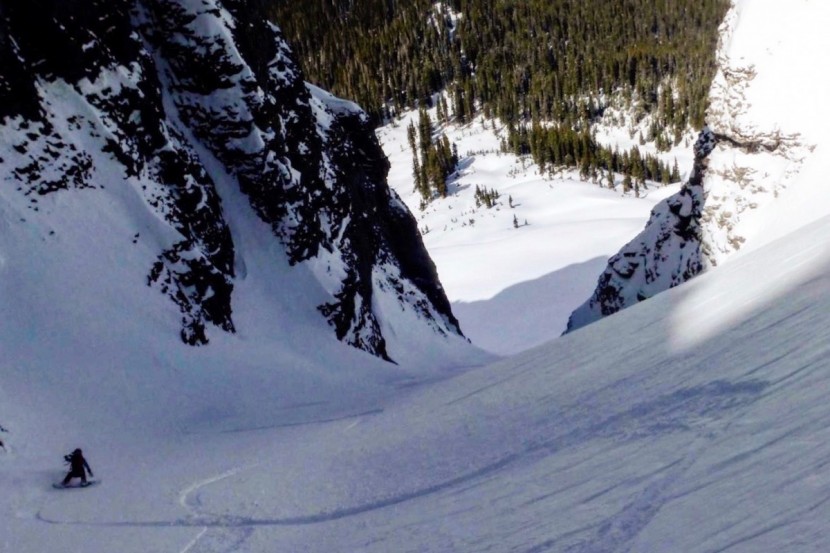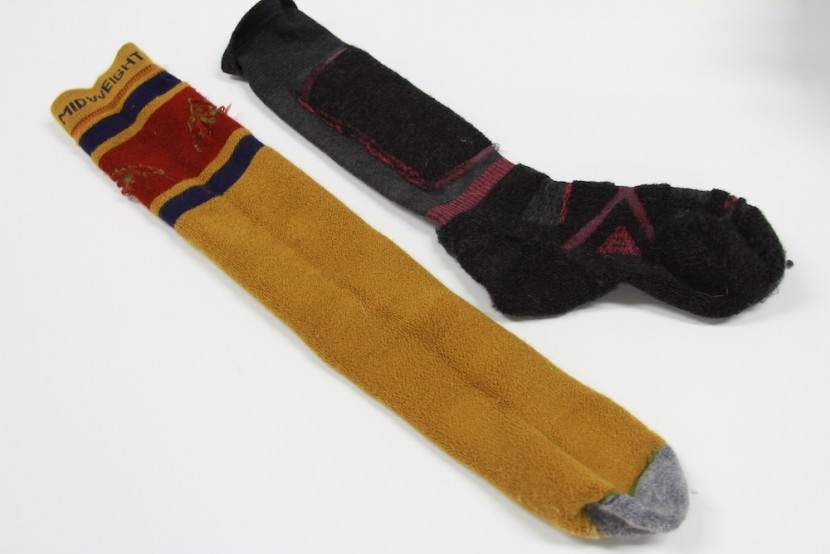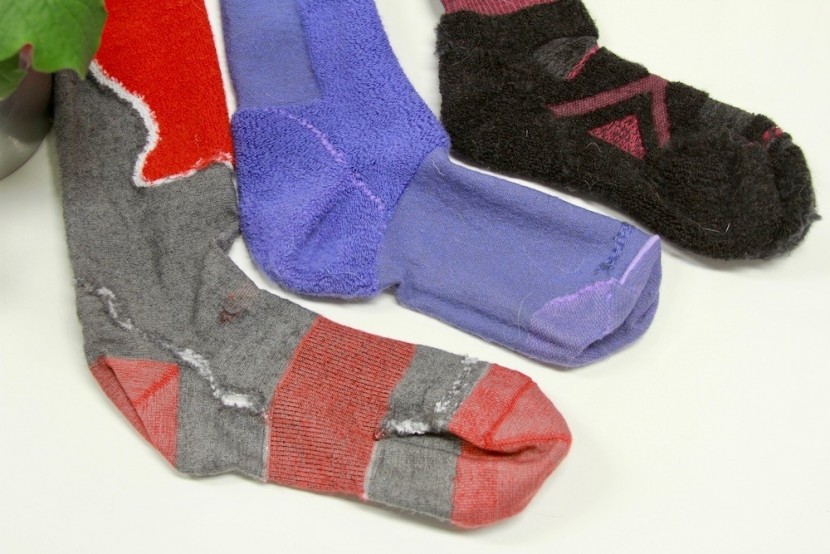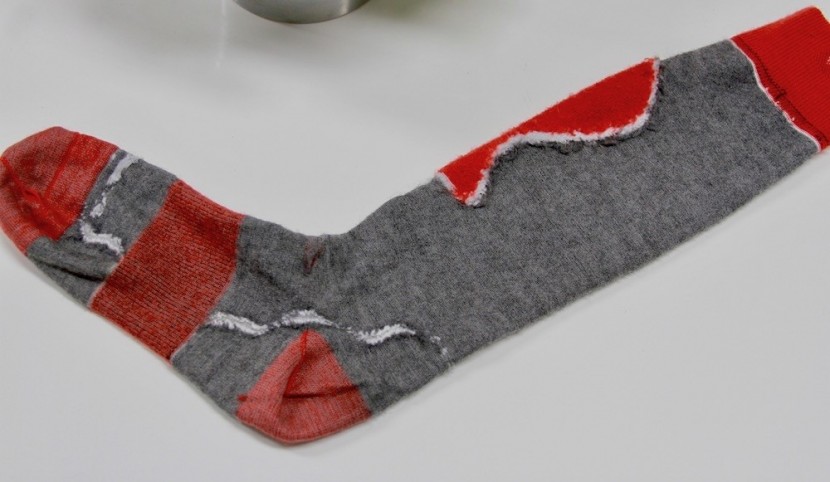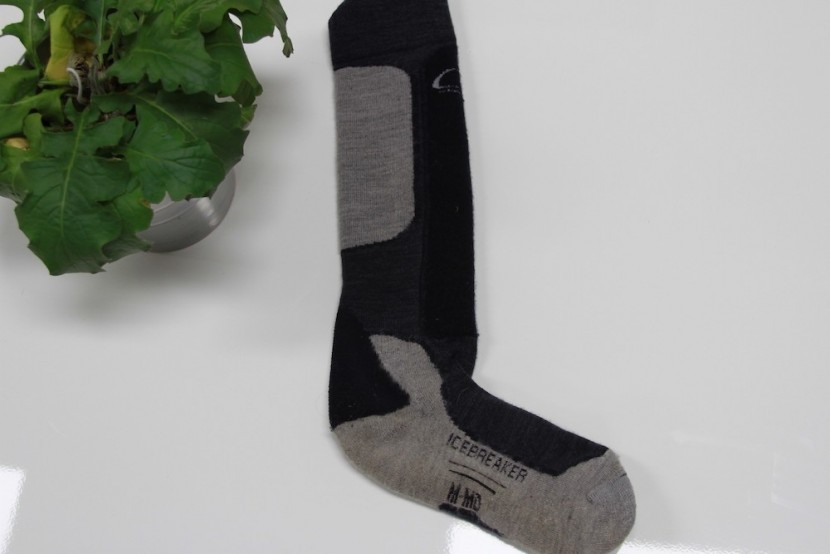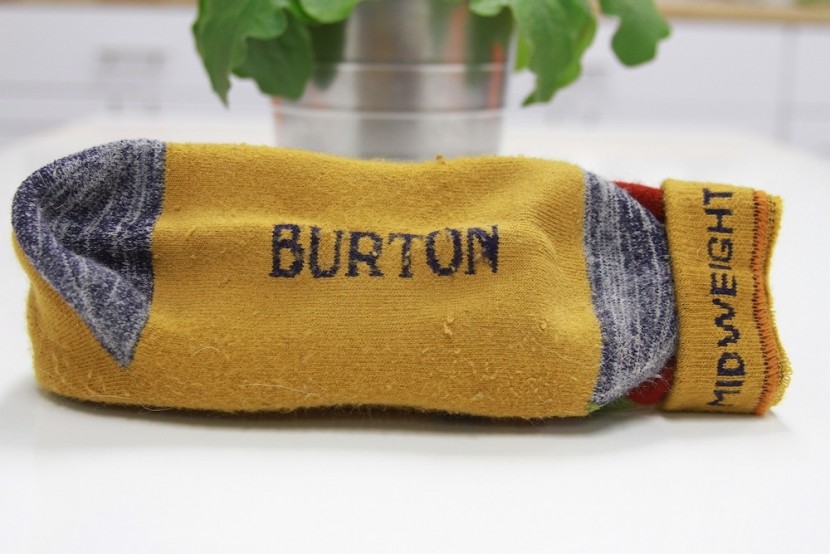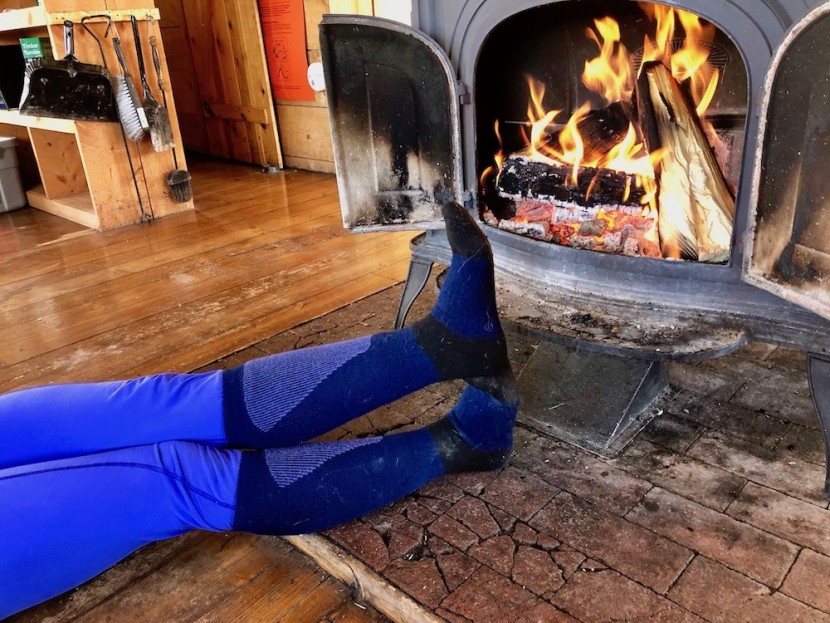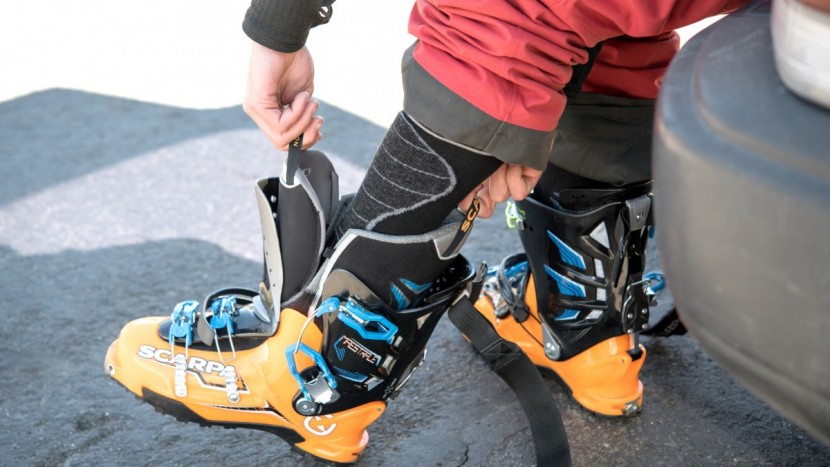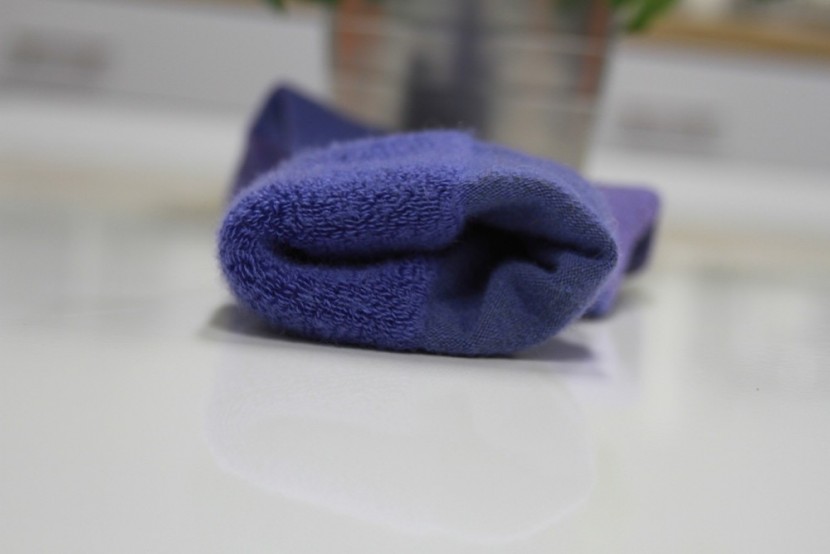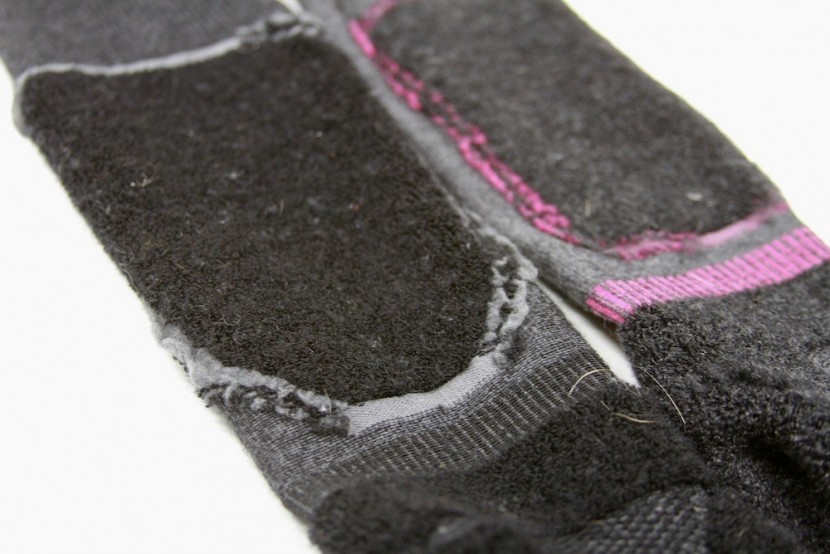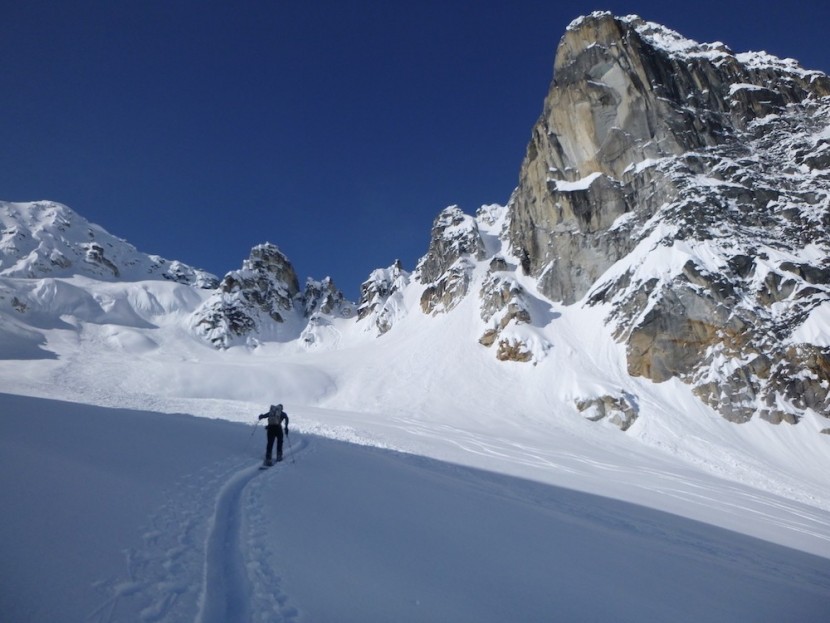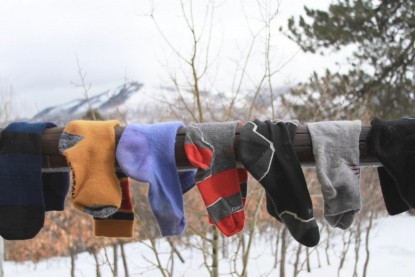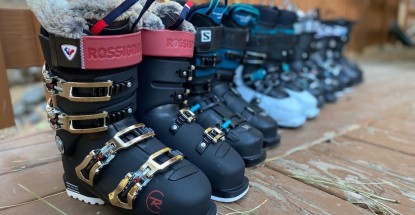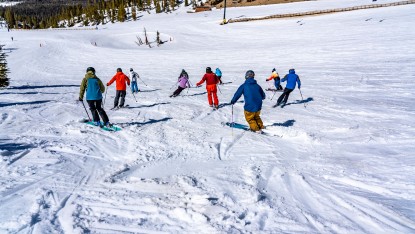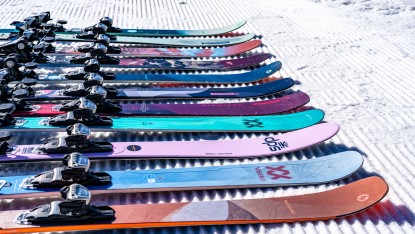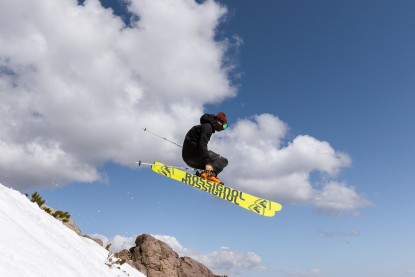With many options on the market, the right sock may be hard to find. A great ski sock is one that doesn't impede the fit of your boot while offering moisture management to keep your feet dry. Depending on your ski boot fit preference, how hard you hit the slopes, and how sweaty your feet get, the weight and construction of a ski sock that you need might change. In this article, we hit all those major points, offering you the information that you need to make a well-informed choice for your next pair of ski or snowboarding socks.
Related: The Best Ski Socks of 2025
Why Buy a Ski or Snowboard Specific Sock?
A ski sock is different from hiking or running socks simply because of its unique construction. While most socks are simple tubes of material, a ski sock is sooo much more. Ski socks are tall enough to offer warmth from foot to knee, protecting your skin completely from your ski or snowboard boots. The fit is tight to ensure complete articulation with your skin to wick away water vapor as you sweat.
The best performing ski socks are constructed with an amalgamation of merino wool and synthetic fibers to promote effective moisture management, warmth, and durability. It also has areas of compression paneling for added ventilation and strategically placed areas of cushioning for comfort and durability. If you're seeking a way to keep your feet warm this winter and you're not psyched on buying a brand new pair of boots, getting a few new high-performance ski socks could prove to be the most economical solution. Improve circulation and manage moisture better while carving out fresh lines on untouched crystalline slopes.
Warmth of Ski and Snowboard Socks
While some folks might think a thicker sock is inherently linked to more warmth, the opposite is true for the vast majority of skiers and snowboarders. A thicker sock cannot wick away moisture as effectively as a thinner sock, leading to a colder foot in the long run. Warmth in a ski or snowboard boot will come in the form of ski socks that can insulate and vent water vapor effectively.
The sock's function is simply to provide a wicking surface with a proportional level of insulation that will protect the tissue of the foot. This creates a dry surface at the foot, providing ample warmth. A boot that is insulated will keep in this heat while allowing water vapor to escape effectively. A properly fitting boot that doesn't inhibit circulation is also crucial to ensure warm feet. Therefore, when considering your socks, make sure your boots fit first, then find a thinner pair of socks that will complement your set-up.
Sock Material
There are many sock materials out there, but there are two main categories to consider — merino wool and synthetic construction. The best performers in this review fall into the category of merino wool blend, while more cost-effective options are constructed of synthetic materials. Below we discuss the pros and cons of both categories and outline other materials to look for when searching for your next pair of socks for the slopes.
Merino Wool
A wool blend is hands-down the best way to go when considering performance. Merino wool is the most popular type of wool used in outdoor gear textile because of its luxurious softness. Socks made of this material aren't just warm and comfortable, but the materials can absorb water vapor readily and releases it well. The result? Warmth when wet and wonderful breathability. If you seek the best performance, look for a sock that is constructed mostly of merino wool. While merino wool is nice, it's not the most durable or stretchy. That's why it's important to look for a sock that has additional synthetic materials like Elastane or Spandex for a better fit and increased durability. It's also important to note that most merino wool blend options will be pricier. That said, in our testing, they are also fairly durable, with the propensity to last for multiple seasons. If you have the money, we'd recommend splurging on socks made primarily of merino wool.
Synthetic
A less expensive option is a sock made from synthetic (or unnatural) materials. These are typically constructed of either acrylic or polypropylene materials that have great durability and also insulate when wet. While they can be used for a day of skiing at the resort, the materials are not as warm as merino wool, and typically hold more moisture than merino wool blends. As a result, they are not recommended for multiple-day wear and don't perform as high as merino-wool blends. If you're seeking a sock that'll keep you warm for a day or skiing at a low price, a synthetic sock is your best option.
Other Materials
Nylon: This is a great material that adds wicking power to the sock. With a little bit of nylon, the sock can get that moisture away from your skin, promoting better moisture management. Make sure to look for a little nylon in your ski or snowboard sock. Many wool models spin the merino fibers around a nylon core, which increases the wicking power and durability of a sock.
Elastane or Spandex: These materials help to promote elasticity and better fit. This elasticity offers a close fit that will also help to wick away moisture from the foot. Once again, if you're buying socks online and can't try them on, make sure they have a little bounce back for a specific fit.
Fabric Thickness
The thickness of a ski or snowboard sock is just as important to consider as sock material. While the common thread of thought with any newcomer to the ski sock game is that thicker is better, the opposite is true. A sock's major function is to provide a wicking layer that ultimately removes water vapor from the surface of the skin to keep the foot warmer.
Sock thickness can vary from heavyweight to ultralightweight, with the difference in the thickness and density of the fiber construction. In all cases, we recommend socks that run between ultralightweight and medium weight. These weights typically wick better and dry faster, while offering the appropriate amount of insulation for its function. Thicker socks do provide a little more insulation but also hold more moisture, which ends up colder in the long run.
Ultralightweight
Best for snow sliders that have a super-specific fit on their boot that is rather tight. This weight has bare-bones insulation, the greatest wicking power, and typically dries the fastest (depending on the material). Many of our dope ski testers that rode backcountry terrain and found themselves hiking for miles uphill prefer an ultralight sock to other weights simply because of its wicking power. Our resort skiers with a tight-fitting boot prefer this weight as well. The only caveat is that these socks are almost too cold for bone-chilling days where you might find yourself hanging out on a lift for long periods.
Lightweight
A great option for all types of snow sliders with tighter boots. Many skiers prefer lightweight socks because it offers a little more cushioning than the ultralightweight option and a touch more insulation. This weight does not impede ski boot fit, so again, it's a good option for those with super well-fitted boots with a preference for a little more insulation — also a better option for colder days than the ultralightweight option.
Midweight
Most of the socks tested fit into this category and is a universal favorite amongst both skiers and snowboarders. Midweight socks offer the best of both worlds with ample cushioning, a good level of insulation, and a high-performing level of wicking power. If your boots aren't super fitted, and you prefer more cushioning and thickness underfoot, this universal favorite is a great go-to. Our Editors' Choice-winner and other favorites fall into this category. A great option for colder weather or if you struggle with circulation issues.
Heavyweight
Some ski socks are better built for hanging out in a hut at the end of the day. Heavyweight options do exist, and they offer much warmth in the form of insulation, but this warmth is typically lost through the day as the thick fabric can easily hold onto water vapor and stay wet. Our recommendation is to avoid heavyweight options for active days where you might break even a tiny sweat.
Key Sock Fit Features
A fantastic ski sock doesn't just have the right materials and thickness but boasts a specific fit. A great fitting sock is a part of the recipe for warmth and success on the mountain. If the sock scrunches up or loses its shape, that can make for a bad day. Below we look at the key sock features that you should consider in your purchase.
Length
The first thing to look at is the relative length. You don't want it to be too long or too short. While ski and snowboard socks come up the leg, some are longer than others.
Compression Panelling
Compression paneling is typically thoughtfully distributed throughout the sock to ensure it doesn't slide down the leg or deform in the face of moisture. Also, this provides a site of great moisture exchange. Look for a sock with compression paneling around the arch of the foot and right above the ankle. These are sites that don't need additional cushioning and will help to keep the sock on more precisely while you charge down double black diamonds.
Cushioning Panels
These panels are incredibly important, especially if you're somebody who suffers from “hot spots” or “pressure points” on your boot. However, if your boot fits properly, you shouldn't require any additional padding for comfort, only for added durability. Be sure to look for a sock that offers cushioning in the shin, ankles, and toes. Heel and underfoot padding are also nice if you're seeking a warmer experience with a little extra comfort. All these points offer better durability a more comfortable experience on the slopes.
One of the unique features of a ski and snowboard sock is shin cushioning. This is designed to provide a little more protection from 'shin-bang' on the slopes. This is when there is a little wiggle room in your boot, and when moving back and forth, the shin bumps the front of the boot. While a well-fitted boot should prevent this, this is a common experience many skiers have. Therefore, if you have sore shins at the end of the day, look for a sock with thicker shin cushioning, or check the fit of your boot.
Level of Tightness
When considering fit, you want to make sure your sock isn't too tight. Some socks offer compression paneling throughout, and if you're not used to it, you may not like it. Also, if you're blessed with powerful and muscly calves, you might have a hard time finding a sock that fits. Look at the level of stretch in the calf of the sock and the elasticity in the band at the top. Reference our gear reviews to get a leg up on the relative level of tightness for each sock. If you are a person having a hard time finding a big enough sock, look at men's options as they are typically bigger. Or if you have smaller calves, consider a women's sock for its slimmer fit. On that note…
Gender Specific Fit: What's the Difference?
While gender-specific fit typically has more “female” or “male” specific colors, the biggest difference between the two is fit. We tested two Smartwool PhD options, women's and men's, with the same relative sizing. In our tests, we found the men's option to be a little wider in the foot with more volume in the calf.
Instead, consider the relative size of your foot and calf. If, for example, you are a woman with burlier calves and wider feet, maybe do a little research to see if that size will accommodate you. If it doesn't seem to be that way in your research, take a look at the men's option instead. Alternatively, if you're a male with smaller calves and a more narrow foot, consider the women's sock instead. Overall, choose the best size for you.
Conclusion
Choosing the correct sock for skiing or snowboarding is crucial for ensuring a great day on the slopes. One that can manage moisture will offer great performance, even on the coldest days of the year. Remember, a thicker sock doesn't equate to a warmer sock. It's all about construction and how you ski. Make sure to choose the right weight and features that will work towards keeping your feet dry on the mountain.

